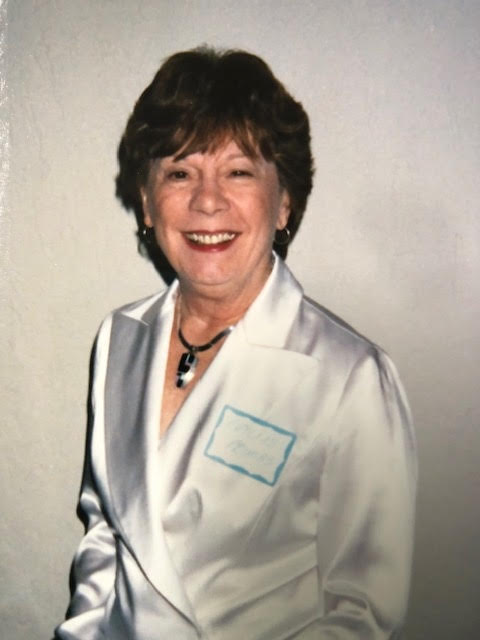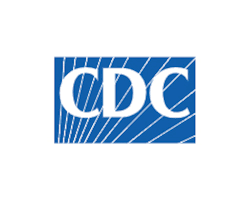Many of AzPHA’s public health priorities are driven by Resolutions that are approved by our members. AzPHA has dozens of Resolutions in place dating back to the 1930s. They are all available on our Wild Apricot site: https://azpha.wildapricot.org/sys/website/?pageId=1465233
Early resolutions focused on the importance of food safety regulations, tuberculosis control, family planning, and other contemporary public health issues. More recent Resolutions have focused on support for addressing the Opioid epidemic, certifying community health workers, and addressing electronic cigarettes. Our Resolutions are important to us because they set our public health advocacy priorities.
AzPHA Resolutions stay in place until and unless the Members vote to remove or update a Resolution. There is a process for developing new Resolutions. Resolutions are developed by AzPHA Members and are forwarded to the Board for review. Members must approve all Resolutions.
AzPHA has a long history of promoting family planning, women’s reproductive rights and access to legal and safe abortion care, with AzPHA members having ratified 8 Resolutions over the years. Our Resolutions:
1938 Support for Local Birth Control Clinics
1938 Proper Medical Supervision in Birth Control Clinics
1971 Liberalization or Abolishment of Current Arizona Laws Concerning Abortion
1971 Family Planning Information & Services
1981 Opposition to Constitutional Amendments or Statutes that Prohibit Abortion
1981 Male Involvement in Family Planning
2018 Continuing Support of Title X: The Nation’s Family Planning Program
2018 Supporting Universal Access to Contraception
__________________________________________________
Here’s a Full Compilation of AzPHA’s Resolutions Going Back to 1935:
1935 Request change in the recording of deaths Download
1935 Appreciation to Governor B. B. Moeur, designating him an honorary member of the Association Download
1935 Gratitude to the Surgeon General of the U.S. for sending representatives to the Association meeting Download
1935 Appointment of a special legislative committee to advise and consult with State Legislature on laws affecting public health affairs Download
*1938 Support for local Birth Control Clinics Download
*1938 Proper medical supervision in Birth Control Clinics (#6) Download
1947 Support of the Central Arizona Project Download
1951 Consideration of funds for Civil Defense Download
1951 Study of Public Health employee salaries with a view to periodic adjustment of basic salaries to fit rising cost of living Download
1953 Support of legislature to halt spread of T.B. Download
1953 Nurses’ section of AzPHA opposed to use of Jerome Hospital for State T.B. Hospital: supports construction of new hospital in more accessible areas Download
1953 Recommendation: All children in Az should be eligible for Crippled Children’s Care Download
1953 Availability of Public Health Nursing Service in every county Download
1957 Registration Act for Sanitarians Download
1957 Support of Az State Nurses Association on certification of school nurses Download
1957 Public Health agencies should urge their employees to take advantage of opportunities for Public Health Education and Provide educational leave for this purpose Download
1964 Recommend to President Lyndon Johnson that George Marx be appointed the Federal Water Pollution Advisory Control Board Download
1964 Solid Waste legislation Download
1965 Proposal: School Health Education Download
1967 Registration of Sanitarians Download
1967 Governor to designate the State Health Department as Health Planning Agency under P. L. 89-749 Download
1969 Preparation for Family Life within educational system Download
1969 Registration of Sanitarians Download
1969 Regulation and Licensing of labor Camps Download
*1971 Liberalization or abolishment of current Arizona Laws concerning abortion Download
1971 Preventative health Download
*1971 Family planning (birth control) information and services Download
1971 Legislated Health Practice Areas Download
1971Health Data Systems Download
1971 Relationship between Social Services and Economic Planning Download
1972 Fluoridation of water to optimal levels Download
1975 Establishment of Lloyd E. Burton Scholarship Download
1976 Vote No on Prop 300 – auto inspection Download
1976 Comprehensive health medical care through Medicaid Download
1976 Delegate authority for meat and milk control to Arizona State Department of Health Services Download
1977 Allocation of funds for immunization Download
1977 Family Life Education in schools Download
1977 Commends State Legislature for passage of H.B. 2047 – inspection of meat and dairy Download
1977 Commends Governor Raul Castro for support of Medicaid and expressing disappointment toward attitude of State Legislature Download
1977 Promote DEFEAT of the Hyde Anti-abortion Amendment and that Countries’ Boards of Supervisors provide funds for elective abortions Download
1978 Dispensing Drugs by nurses in rural areas Download
1978 Endorsement of E.R.A. Download
1980 Support for the wider role of the RN Practitioner Download
1980 Prioritized list of health concerns – Download
1980 Proposition 106 and Public Health Services passed unanimously Download
*1981 AzPHA supports the resolution of the Arizona Right to Choose, Inc., which unconditionally opposes Constitutional Amendments or Statutes to prohibit abortions Download
1981 Concerning Location of Services in an Indigent Health Care Program – passed Download
1981 Supporting development of an M.P.H. Degree in Arizona – passed Download
1981 Encouraging Legislature to Fund Comprehensive Disease Control Services – passed Download
1981 Concerning a state-funded office or rural health – passed Download
1981Encouraging Legislature to Fund Comprehensive Maternal and Child Health Services – passed Download
1981 Proposed resolution by APHA on “Male Involvement in Family Planning” – passed Download
1982 Endorsing the nomination of Alvin Robert Leonard, M.D., M.P.H. for the Sedgwick Memorial Medal Awarded by APHA – passed Download
1982 Request President to encourage FDA to enact regulations for labeling of sodium content of foods by 9/30/83; and petition AZ State Legislature to enact legislation requiring foods processed in AZ be labeled for sodium content Download
1983 Oppose the development and deployment of nuclear weapons Download
1983 Public access to data collected by AHCCCS program; foster public discussion of future of AHCCS; work toward expansion of the program Download
1983 AzPHA apply the AZ Sanitarians’ Registration Council for approval for valid continuing education credits for Sanitarians Download
1983 AzPHA actively support efforts to cause the AZ Legislature to appropriate funds to implementation of S.B. 1264. mandating perinatal services Download
1983 AzPHA seek legislative and regulatory support for development and implementation of a continuum of long term care services for the elderly and disabled, including home health care, and the utilization of the Title XIX funds in state of AZ Download
1983 AzPHA expresses to officials of Nogales, Sonora, its deepest concern effects of the flooding; and for the hospitality and friendship the officials and citizens of Nogales, Sonora have shown and pledge to promote to continue that same hospitality and friendship in AZ Download
1984 Increase drinking age to 21 Download
1984 call for action for ADHS director for smoking policy of ADHS Download
1985 AzPHA calls for major increases in funding for AIDS prevention and public education against discrimination Download
1985 Adoption of resolutions on smoke free hospitals Download
1986 Urge Hospitals and other health care providers to recruit Spanish-speaking professional staff, interpreters Download
1986 Reduce and/ or eliminate smoking from enclosed public places Download
1986 Requirement that all insurance carriers in AZ accept assignment of risks for voluntary and small non-profit health care programs Download
1986 Discourage the use and promotion of smoking products including smokeless tobacco Download
1987 Primary Health Care Download
1987 Student Loan Program Download
1987 AZ area Health Education centers Download
1987 Oppose proposed Title X regulations Download
1988 Oppose Registered Care Technologists, propose ways to alleviate the Nursing Shortage Download
1989 Impact of Webster Decision – reaffirms previous pro-choice stance Download
1989 Hazardous waste management Download
1989 Protecting Confidentiality of AIDS services Download
1989 Services to HIV infected individuals Download
1989 Supporting voluntary HIV testing Download
1989 Restricting mandatory HIV testing Download
1989 School Immunization Requirements Download
1989 AZ Pharmacists filling prescriptions written by foreign physicians – supports Download
1990 Health care for all Arizonans Download
1990 Basic Public Health Services Download
1992 Early Periodic Screening, Diagnostic and treatment programsDownload
1993 smoke free campus Download
1993 tobacco vending machines Download
1993 tobacco retail licensing Download
1993 Tobacco Excise tax Download
1994 Repeal of S.B. 1053 Download
1994 Public Health in Health Care Reform Download
1995 Support state resources for Arizona Health Education Center Download
1997 Support local, state, and national efforts to prevent, control and remedy environmental pollution Download
1998 Support activities as an organization, in coalitions or individuals to reduce incidence of domestic violence Download
1998 Prevent abuse of antibiotics Download
2000 Folic Acid Prevention and Neutral Tube defects Download
2000 Abolition of the Death Penalty Download
2000 Childhood Asthma Download
2000 First Oral Health Assessment Download
2000 Injury and violence prevention, and control programs in the state and local health departments Download
2003 Osteoporosis Prevention Download
2003 Perinatal mortality review Download
2003 Primary seat belt law Download
2005 Pharmacies and Pharmacists – Duty to Fill Prescriptions Download
2005 Adolescent Access to Comprehensive, Confidential Reproductive Health Care Download
2005 Hold AzPHA Meetings in Smokefree Cities Download
2005 Fairness in Domestic Partnerships for All Arizonans Download
2005 Protecting Environmental Quality and Health Download
2005 Support for Land Use and Transportation Policies to Promote Public Health Download
2005 Support the Tobacco Free Arizona Initiative Download
2005 Promoting Public Health and Education Goals through Coordinated School Health Programs Download
2006 Support Public Health infrastructure Download
2007 Health Care for Uninsured Download
2008 Comprehensive Approach to Health Disparities Elimination in Arizona Download
2009 Tax on Sugar Sweetened Beverages Download
2009 Breastfeeding Support at Worksites Download
2009 Actions to Reduce the Public Health Impacts of Climate Change Download
2013 AzPHA Recommends Adopting APHA Policy #201119: Increasing Efforts to Encourage Governmental Health Departments to Seek Accreditation Download
2013 Annual Influenza Vaccination Requirements for Health Workers Download
2015 Expanded Family and Medical Leave Download
2015 Supporting Regulation of Electronic Cigarettes Download
2016 Universal Access to Oral Healthcare for Pregnant Women in Arizona Download
2016 Reducing Non-Medically Indicated Elective Inductions of Labor Download
2016 Prevention and Intervention Strategies to Decrease Misuse of Prescription Pain Medication Download
2016 Support for Community Health Worker Leadership in Determining Workforce Standards for Training and Credentialing Download
2016 Regulating Commercially Legalized Marijuana as a Public Health Priority Download
2017 Restrict Tobacco Sales to Persons 21 and Over in Arizona Download
2017 Restrict Texting While Driving in Arizona Download
2017 Require 50 minutes of Unstructured Recess in Arizona Elementary Schools (K-5) Download
2018 Prevent Firearm Violence in Schools Download
*2018 Continuing Support of Title X – The Nation’s Family Planning Program Download
*2018 Supporting Universal Access to Contraception Download
2019 Updated the Firearm Violence in Schools Resolution to include community firearm violence prevention – Download.
2021 Elimination of the Use of Conversion Therapy Practices for LGBTQ Individuals
2021 End of Life Autonomy
2023 NEW: Structural Racism is a Public Health Crisis: Opportunities for Intervention






